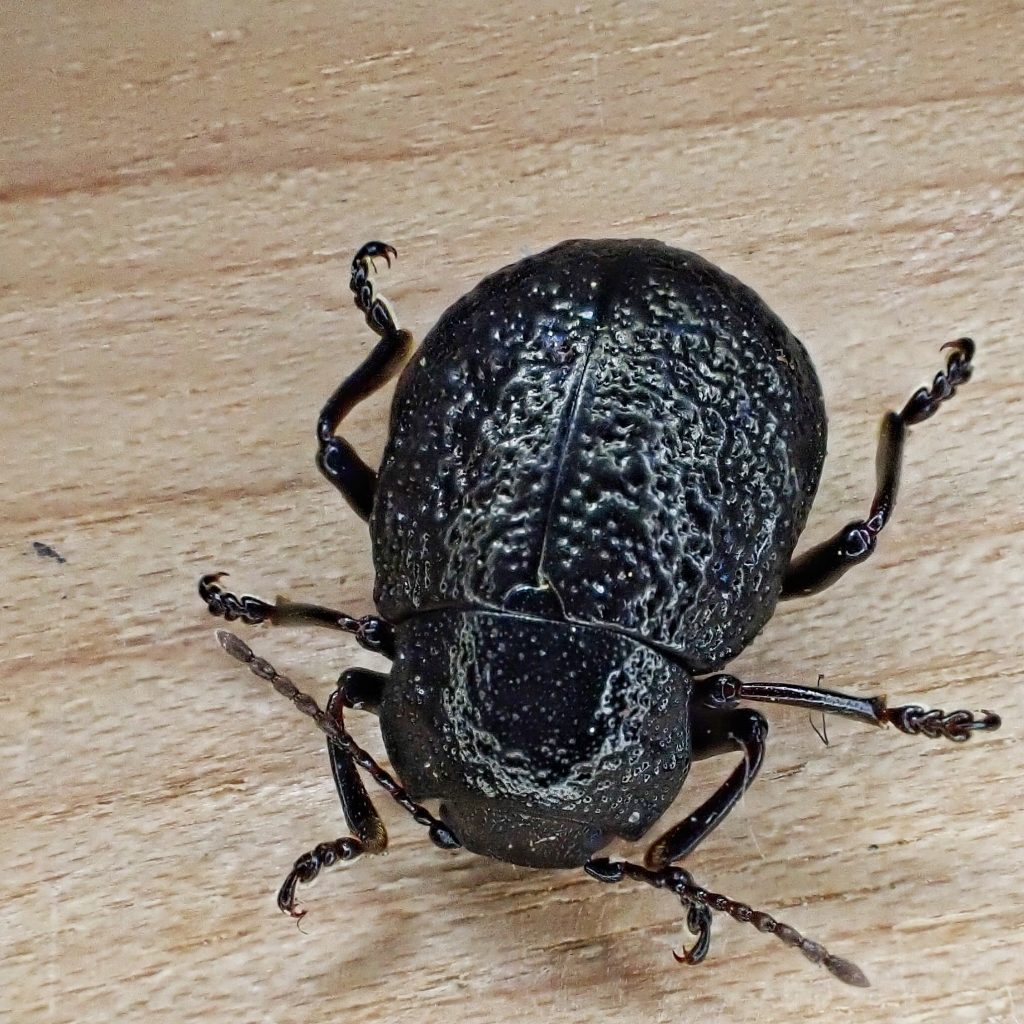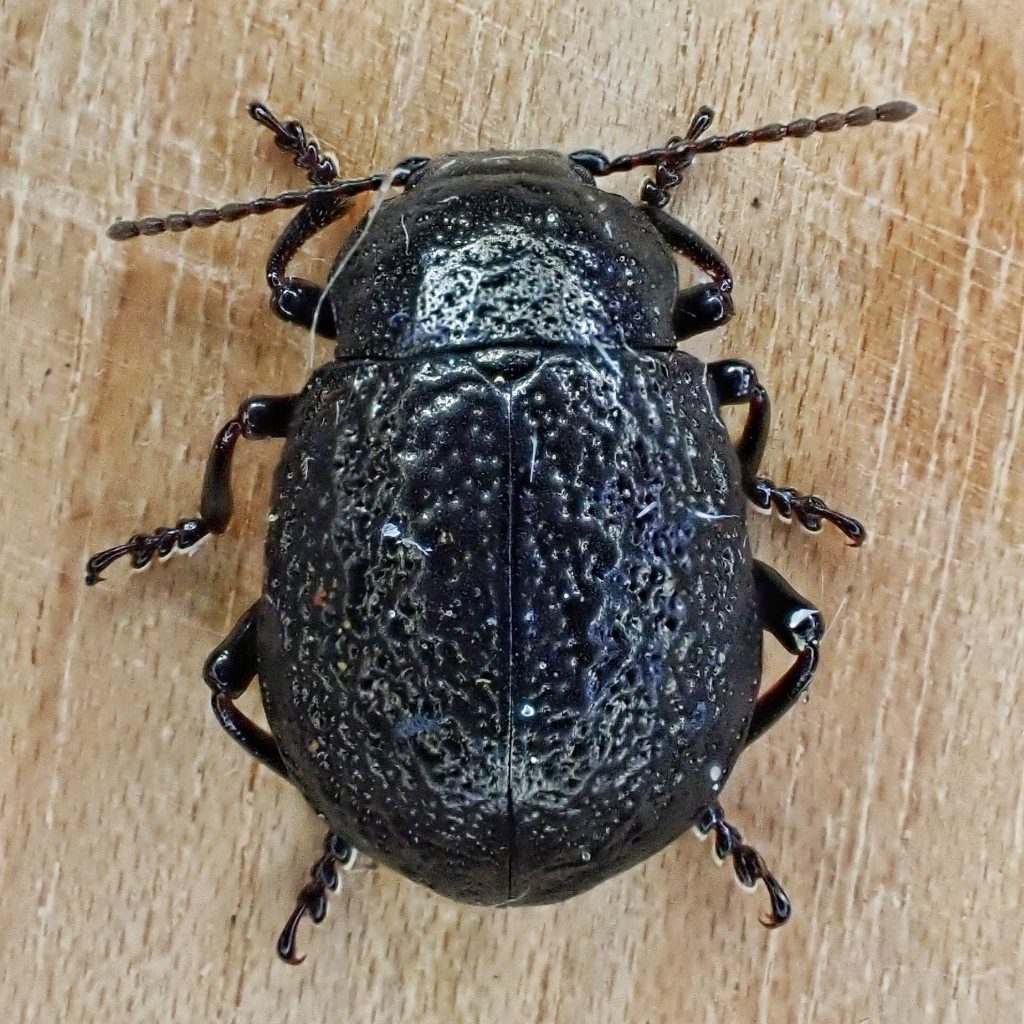
I found the first one of these leaf beetles (Chrysomelidae) at my Temple of Ultraviolet Light during moth madness in late July, up on Canyon Creek in nw Clark County. At the time I brought it home, thinking it might be easy to identify because of the wrinkled (rugose) punctuation, a trait that is not common amongst leaf beetles. When I couldn’t immediately identify it I put it aside, because my focus was on moths. Then I found another one last week in Cowlitz County, near the confluence of the NF Toutle and Green rivers, although this one was spotted in my headlamp on the leaf of a salmonberry shrub. This time I made more of an effort, but was stymied until I thought to run it through Google Lens, which spit out Timarcha tenebricosa and Galeruca tanaceti.
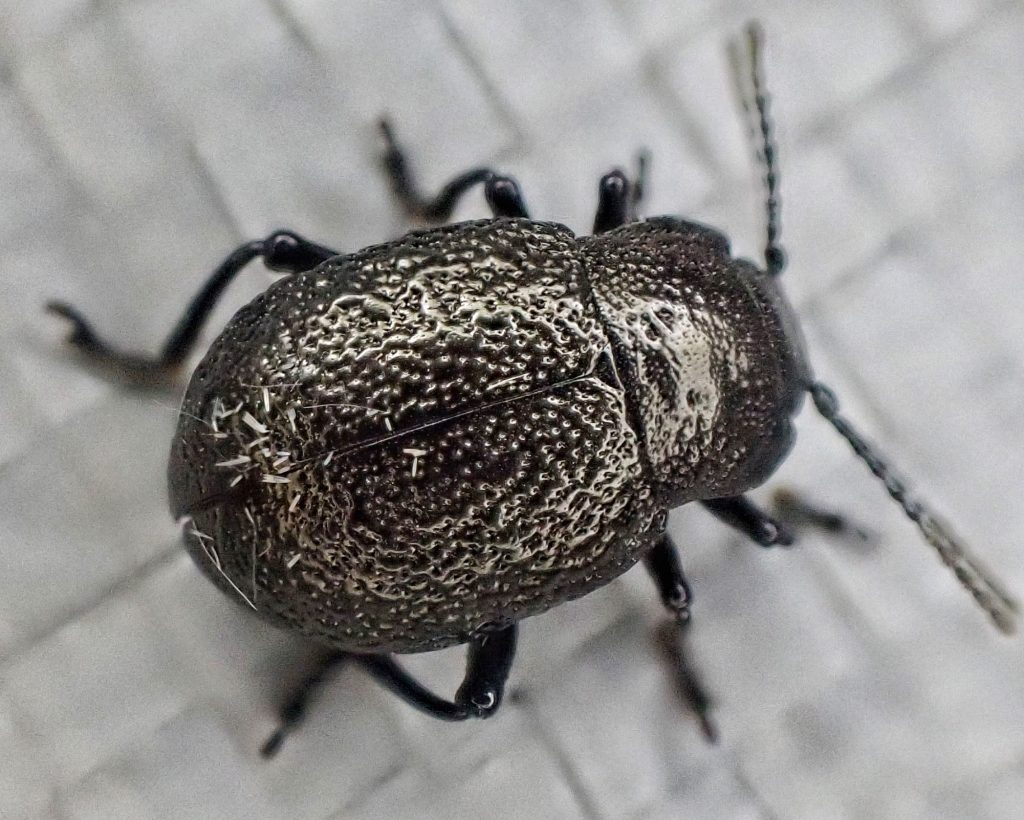
Both of them are European species, and though the Galeruca was rugose, it wasn’t shaped right, especially in the pronotum. The Timarcha wasn’t rugose but the body form looked right, and BugGuide not only had some photos that looked very good, they also said there are only 2 species of Timarcha in North America. So I looked up Timarcha in Hatch’s “Beetles of the Pacific Northwest: Vol 5”, and he said “I am unable to follow Jolivet 1948 in his analysis of the Pacific Northwest population of Timarcha into a series of species, subspecies, and aberrations. In particular, I fail to find the 3 types of aedeagus figured by him”, which basically agreed with Dr. Shawn Clark’s comment on BugGuide that “Currently, there are only two species of Timarcha recognized from North America, T. cerdo Stål and T. intricata Haldeman. The characters reported to distinguish the two (size, color, and punctation) are so variable and overlapping that I sometimes doubt that there is more than just a single species in North America.” (Both quotes can be found at Genus Timarcha – BugGuide.Net) However Hatch did list Jolivet’s differential criteria, and based on size alone (11mm) this bug must be Timarcha intricata.
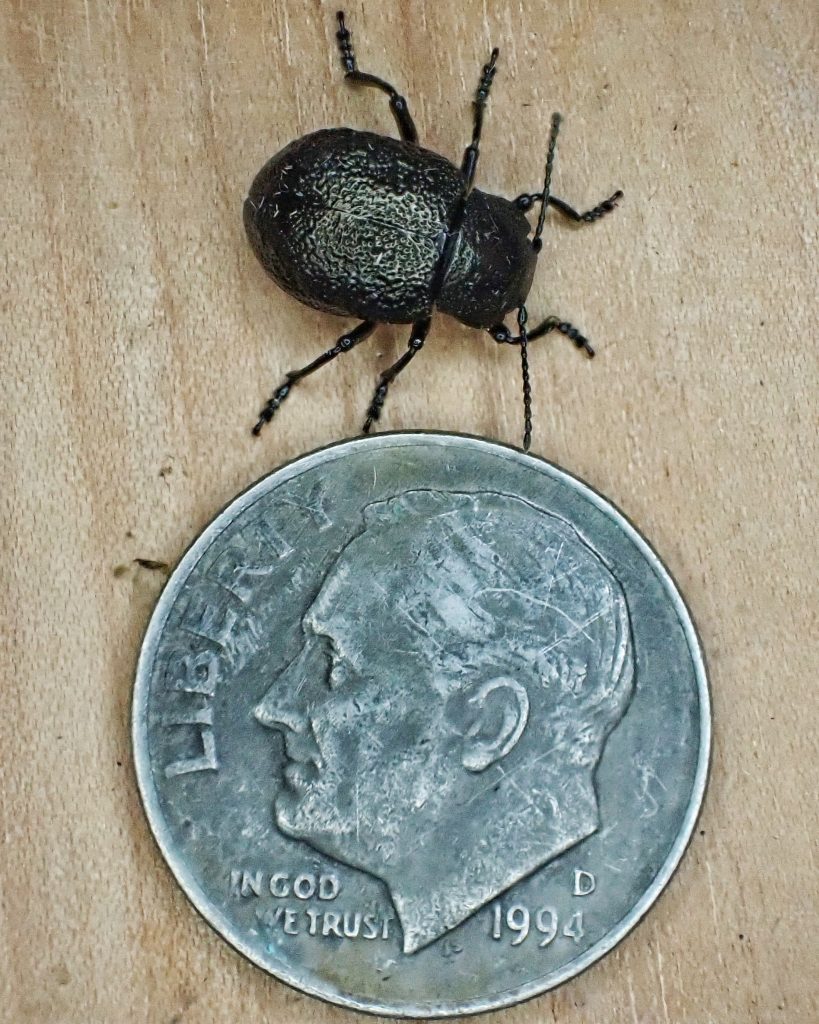
Joliet/Poinar call members of the genus Timarcha ‘living fossils’, and “A very archaic genus, probably originating in early Mesozoic”, Sci-Hub | Timarcha Latreille: A strange beetle and a living fossil | 10.1163/18749836-06041071 , so they’ve probably been around for around 200 million years. And Gomez-Zurita (2008) estimates “separation of the Palearctic Timarcha and Nearctic Americanotimarcha [the subgenus to which he assigned T. intricata] ocurring ca. 48 mya, contemporary with the opening of the North Atlantic up to the Late Eocene.” https://www.researchgate.net/profile/Jesus-Gomez-Zurita/publication/275654088_Species_and_speciation_in_Timarcha/links/5543448c0cf234bdb21a3b8e/Species-and-speciation-in-Timarcha.pdf?origin=publication_detail
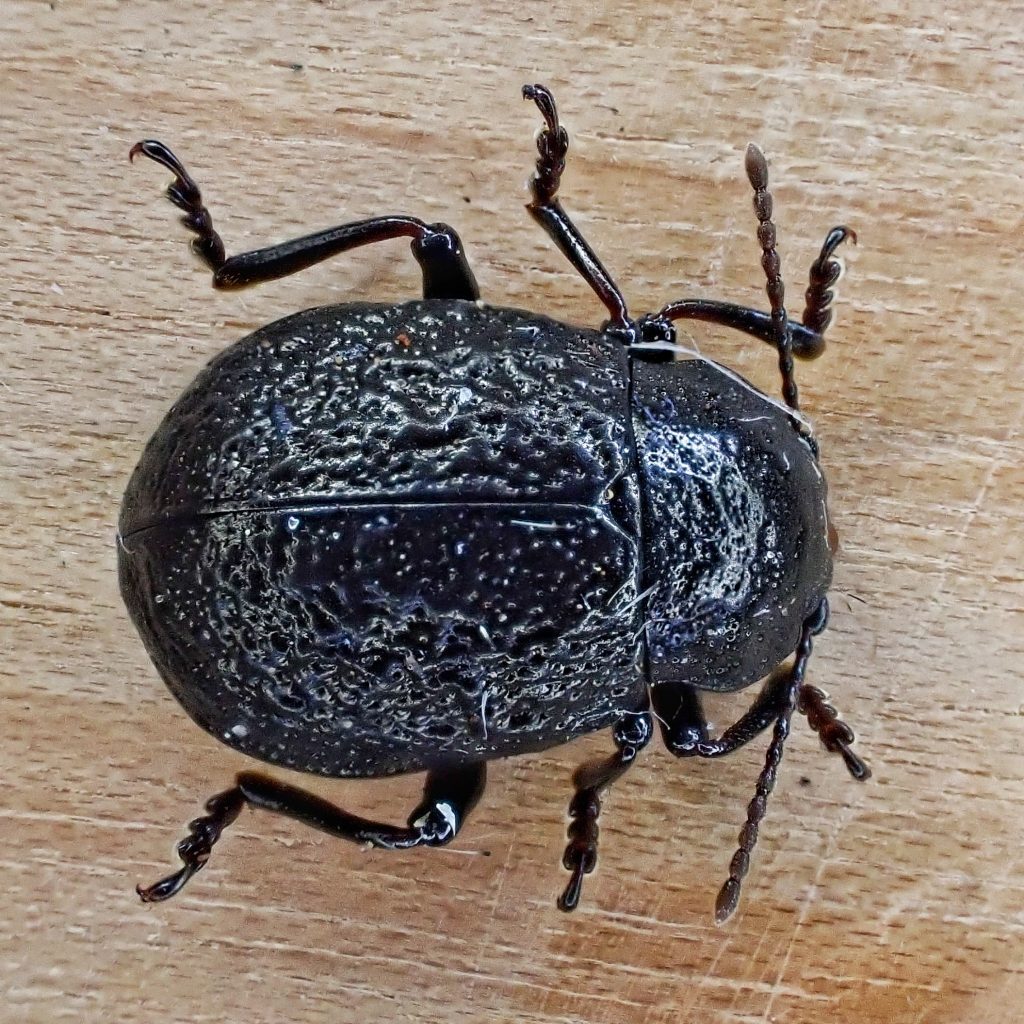
Timarcha intricata is flightless, because it is apterous (having no wings), though it doesn’t have the fused elytra of most Timarcha spp. Timarcha “…are slowly disappearing due to pesticides, to which they are very sensitive, and habitat restriction, due to urbanisation and road building. Parasites are certainly reducing their numbers, and gregarine infections as well as mite infestations, can weaken them”. Sci-Hub | Timarcha Latreille: A strange beetle and a living fossil | 10.1163/18749836-06041071
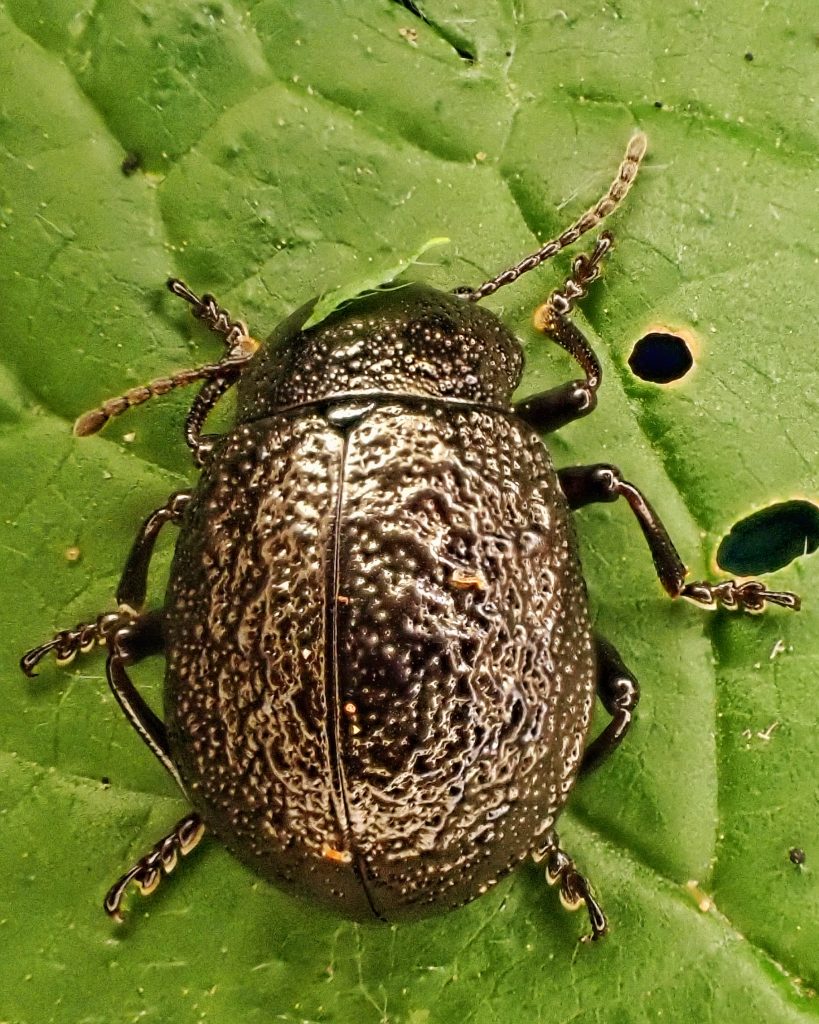
Description– Medium sized (8-11mm), metallic black leaf beetle with that is rugose and coarsely punctured on its head, pronotum, and elytra; pronotum almost as wide as elytra, slightly narrower at the rear with squared corners, and the margins are not deflected; elytra smoothly rounded, slightly narrowing toward the ‘shoulders’.
Similar species– Timarcha cerdo is smaller (5-8mm), and more reddish; Galeruca sp. have yellow at margins of elytra; small Eleodes with rugose elytra have smoothly punctured pronotum.
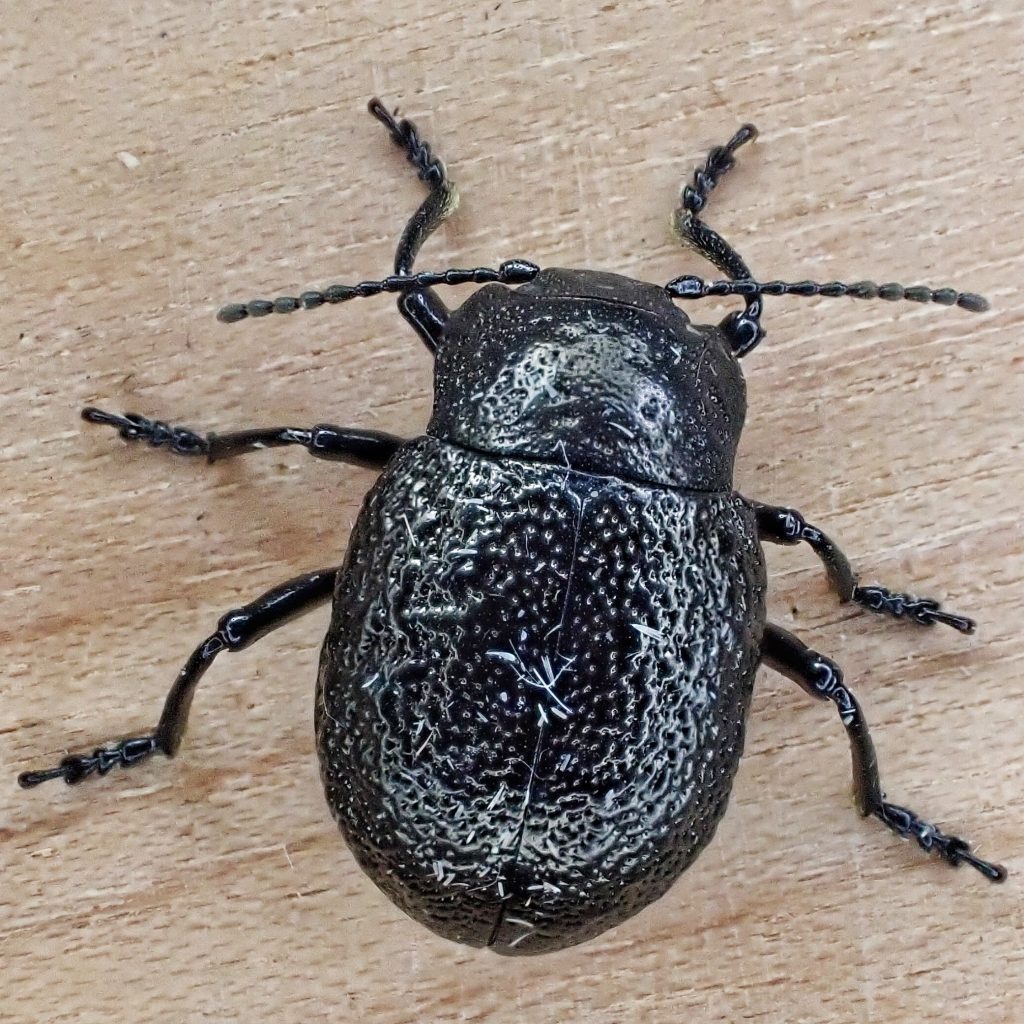
Habitat– Conifer and mixed forests containing their food plants
Range– Western North America; probably region wide in the PNW in appropriate habitat, but I cannot verify that.
Eats– Timarcha intricata has been reported in association with Vaccinium myrtillus, V. ovatum, V. scoparium,,Fragaria chiloensis, F. vesca, Rosa spp, Rubus parviflorus, R. procerus. R. spectabilis, and R. vitifolius, Gaultheria shallon, Rhododendron macrophyllum. https://www.zin.ru/animalia/coleoptera/pdf/clark_ledoux_et_al_2004.pdf

Eaten by– “Timarcha is extremely toxic, its blood being rich with anthraquinones, and the Old World species, being most of them diurnal…produces reflex bleeding abundantly when disturbed (Jolivet and verma 2002). American species being all entirely nocturnal do not show autohaemorrhage. Being so toxic, Timarcha should be devoid of parasites, but on the contrary they are relatively abundant. Only their predators are absent, the bitter and toxic blood being strongly repellent to birds and lizards…So far, Hymenoptera and nematode parasitoids have been found in Timarcha in Europe only. They probably exist also in North America…another ectoparasitoid has been found on the larvae of Timarcha cerdo Stål in Oregon by George Poinar (2003) : Lestodiplosis grassator (Fyles), a Cecidomyidae. The cecidomyid larvae remains on the surface of the beetle, usually between the thoracic and abdominal segments of the larva, puncturing the host’s cuticle and feeding on released hemolymph (Poinar and Jolivet 2004). The parasites are often semi-immersed in a pool of the host’s hemolymph. As they mature, the larvae eventually migrate to other locations on the beetle and a zone of melanized subdermal tissue surrounds the original feeding site. Upon completion of their development, the cecidomyid larvae leave the host and enter the sand where pupation occurs. All the beetle larvae die after the cecidomyid larvae have completed their development. The body cavity of the Timarcha larvae is filled with bacteria at the time of death.” https://citeseerx.ist.psu.edu/document?repid=rep1&type=pdf&doi=16c3d1e0107a570ae05506ac5989015def61a6b5
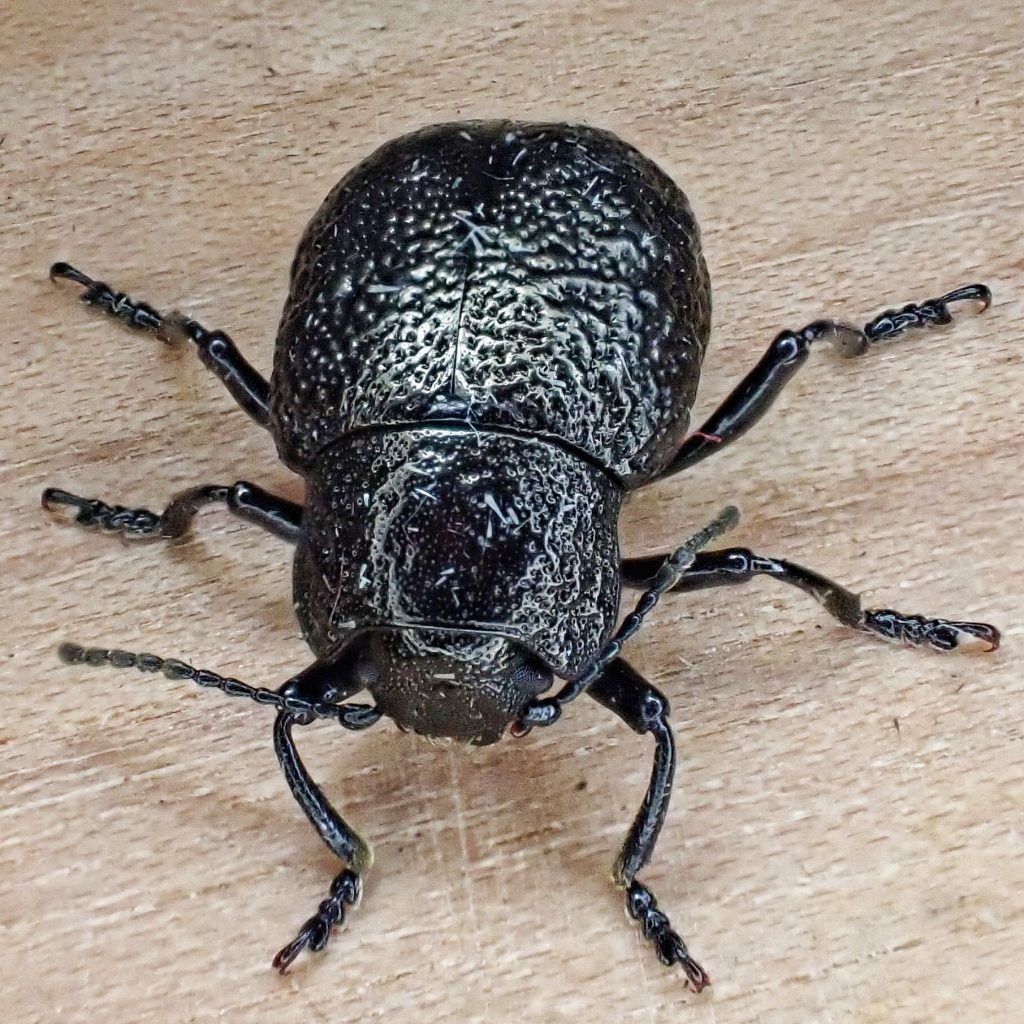
Life cycle– “ The life-history of T. cerdo and T. intricata has not been completely studied, especially concerning the winter diapause…[but in general in Timarcha] There are three larval instars and pupation occurs in the soil. Timarcha are K-strategists and the few eggs laid at any one time are protected by a primitive ootheca made of a fecal deposits, mixed with plant tissues and régurgitation which provides protection against predators. Often, the female digs cavity of 10 to 15 mm (T. normanna) to deposit her eggs. Then she covers the hole with sand or soil. Around twenty red eggs are normally deposited together by T. tenebricosa on the ground,but an average of 80 eggs (30 to 150) can be laid by one female, and pupation, as a diapause, occurs in the soil…Adult Timarcha do not eat their eggs. The fecundity of Timarcha varies according to species, but normally between 40 to 150 eggs are produced. The dark blue larvae do not feed on siblings or on eggs and live a semi-independent life on the plant. The cycle, which varies depending on climate and species, is generally annual…Adults of Timarcha have a relatively long life span for a Chrysomelid (10 to 14 months)” Sci-Hub | Timarcha Latreille: A strange beetle and a living fossil | 10.1163/18749836-06041071
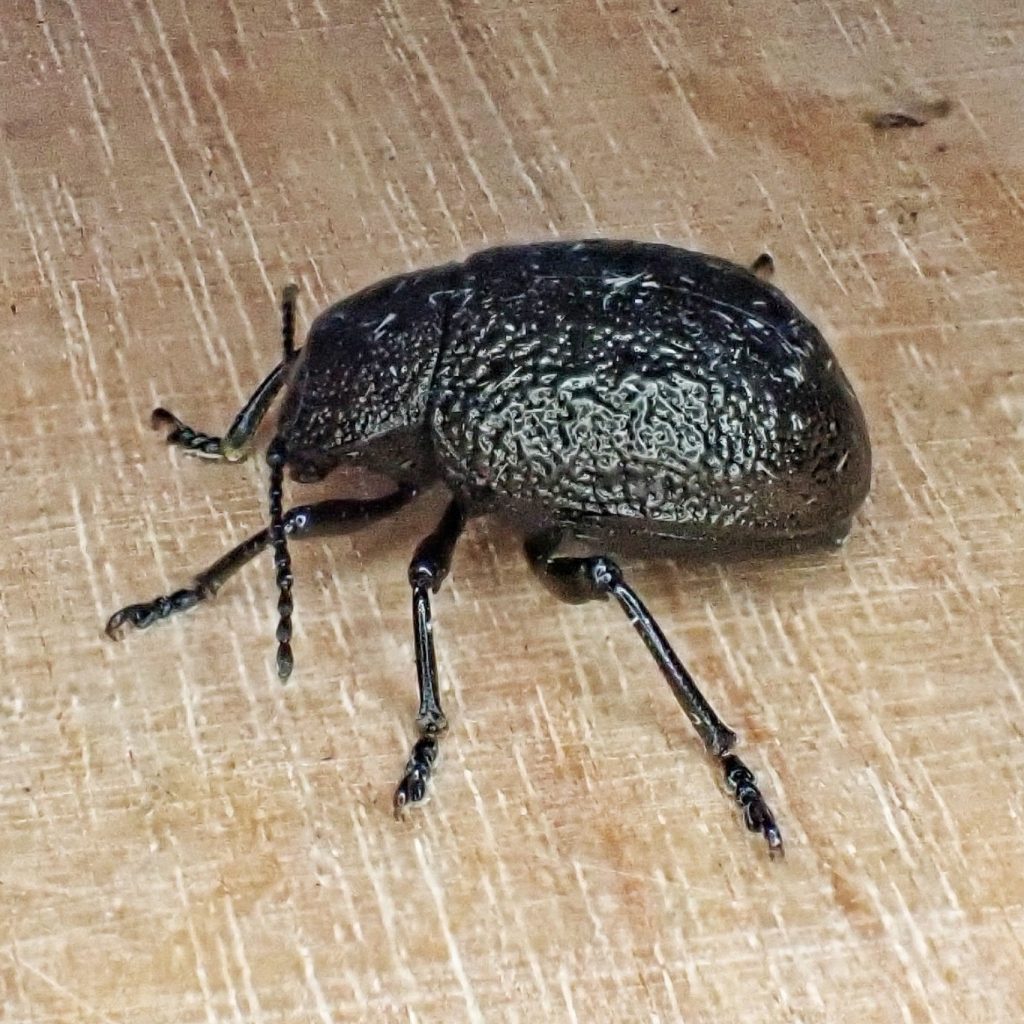
Adults active– Probably year around, though they may be dormant in burrows in the winter, and they are most commonly seen from May into September.
Etymology of names– Timarcha is from the Greek word for ‘a state in which civil and political honors are disbursed according to value of property’, though Timarches were Athenian judges, and Latreille doesn’t bother to explain what the heck any of that might have to do with these beetles. The specific epithet intricata is from the Latin word for ‘to confuse/entangle’, which presumably refers to the intricate patterns of rugose punctuation this species displays on its elytra and pronotum.
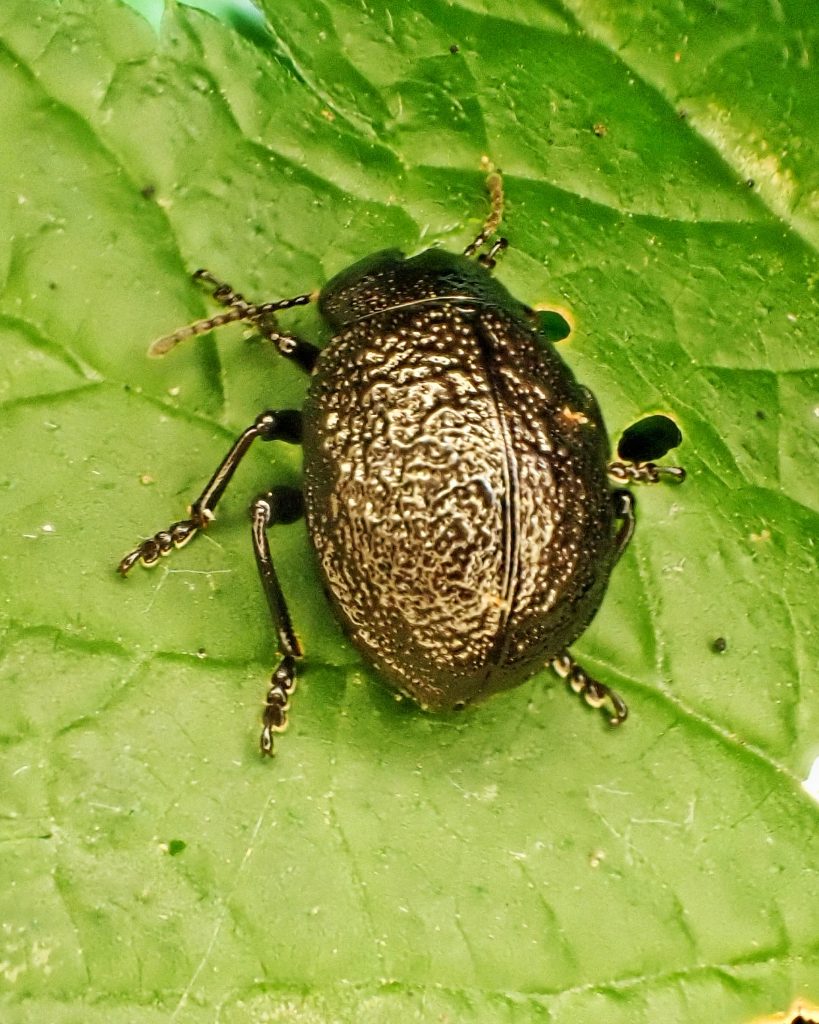
Sci-Hub | Timarcha Latreille: A strange beetle and a living fossil | 10.1163/18749836-06041071
Species Timarcha intricata – BugGuide.Net
https://www.zin.ru/animalia/coleoptera/pdf/clark_ledoux_et_al_2004.pdf
